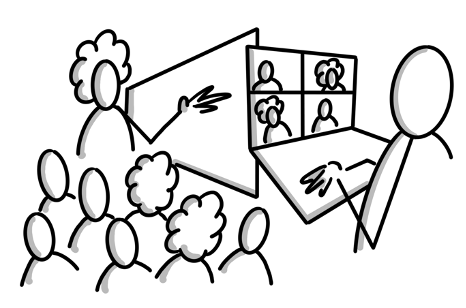“I Know Kung Fu” – the Power of Just-in-Time Learning

Wouldn’t it be great if we could have that just-in-time knowledge when we need it? We’re facing a challenge. We have a lack of knowledge, so we’re unconfident in tackling that challenge, and it would be amazing if we could just plug our brains into some knowledge hub and have just the right amount of knowledge to complete the task just when we need it. Just like Neo does when he first enters The Matrix – “I know Kung Fu!”
Traditional learning

The problem with traditional training is our retention of the knowledge we gain. Most of the knowledge we gain in training dissipates quickly. We can’t hold a lot of information in our brains. Maybe we have made notes, but again—as we’re not in the moment of training anymore they seem unclear and nebulous. You wish you could take that bit of training again, just now, when you actually need it. So traditional training is potentially more inspirational than educational.
In a 2022 study by CompTIA, 30% of companies state they want more training alignment with development goals. And most times, these companies are looking for more modern approaches to learning (such as eLearning, simulation style, autonomous, self-paced learning, etc.).
Introducing learning pathways

They’re designed around competencies and you learn skills in a sequential, progressive way. They enable and empower you to be better at what you are trying to do. So they provide a two-pronged approach to learning: small bite-size, just-in-time learning when you need it, curated to help you understand and embed the knowledge in a much more timely and consumable way.
Timely and consumable
Let’s say, for example, you want to be a team coach, an agile coach in an organization, or a scrum master. Well, of course, you could go to training courses that give you a two-day overview of basic scrum mastery, intermediate scrum mastery, and even advanced coaching. Some of that knowledge, you will forget quite quickly. And you won’t get a chance to practice much of what you retain. So the training becomes semi-redundant because you’ve forgotten the main essence of some of that training, and you want to go back and revisit it again.
Instead, a pathway will break down the aspects of those big chunky courses into smaller bite-sized, topics of learning. And because we can break them down, we can also deliver them differently.
Multimodal learning
Various lessons are best taught in various ways. Examples include:
- Attending a face-to-face session with a trainer
- Reading a book
- Taking an eLearning module
- Watching a video
- Practicing something in your own context safely and getting some feedback on how that went.
And we can couple all of those different modes of experiential learning together to attain certain thresholds or outcomes, including a particular level of competence in the knowledge domain you are trying to master.
You can do all of this at your own pace, at your own time, aligned with your employer’s needs and desires, so they can endorse a pathway you’ve chosen and give you internal accreditation. Or you could simply take these pathways yourself as part of your own personal development, managing and monitoring your own progress.
Pathways will enable you to learn what you need to in real-time, in a much more practical and consumable way that will meet the demands of your journey, and make it more practical in terms of your time scales and timeframes. And, hopefully, a little bit less stressful for you.
For more information, contact the experts at Cprime.



